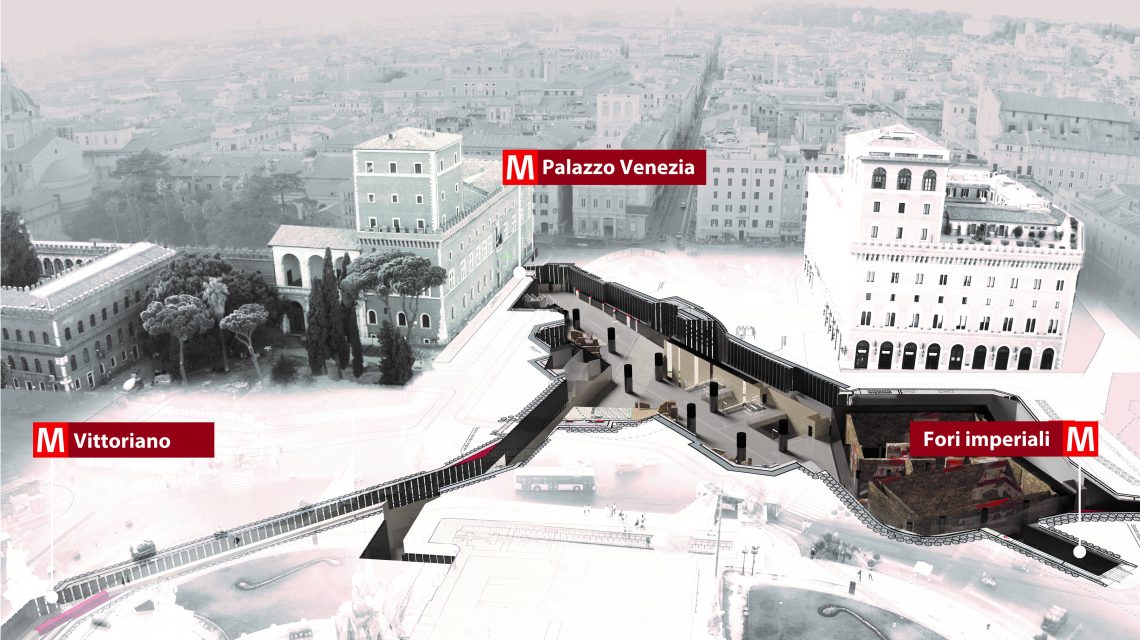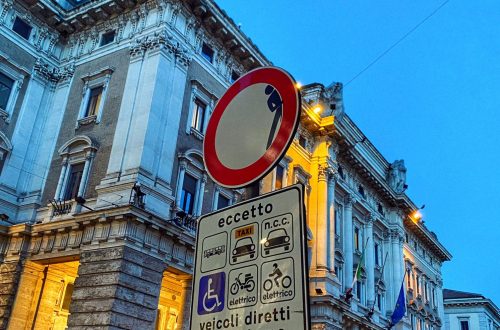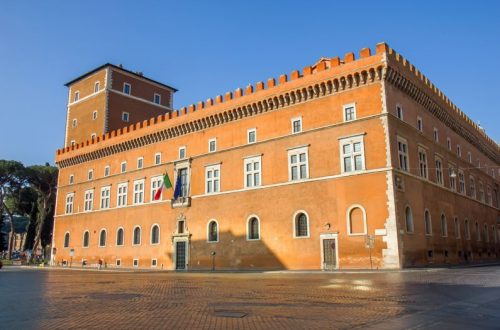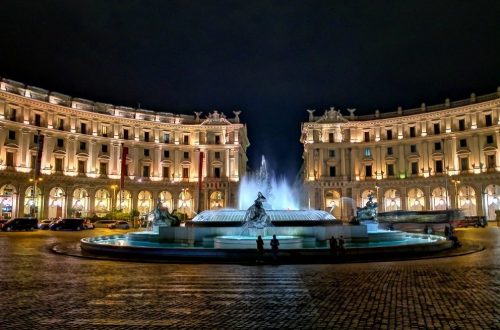
Rome and the new underground
It is a unique challenge, at an engineering level, in terms of size, importance of the historical-monumental context in which it is inserted and its location in the heart of Rome, which starts today with a new phase of work on the Piazza Venezia metro station of Line C of the Metro From Rome.
The station, with a surface area of 4,500 square meters on each floor, will be a central hub of the entire C line, the first automatically guided metro in the capital, commissioned by Roma Metropolitane and built by the Metro C S.c.p.a. consortium, led by Webuild and Vianini Jobs.
Tonight, with the installation of two traffic light systems, one on the Via del Corso side and one on the Piazza San Marco side, the new phase of the Piazza Venezia construction site began, the project of which provides for two-way traffic in the square, on the Palazzo side of Assicurazioni Generali, and the preparation of suitable crossings to guarantee the continuity of pedestrian crossings and means of transport.
With this new construction phase, to build the foundations of the station and reach a depth of approximately 85 meters, the installation of the system serving the hydro-milling machine is planned, consisting of a set of 14 silos of 50 cubic meters each.
The construction works, already started in the central part of the square, will proceed with the execution of archaeological core drilling and pre-consolidation works on the land, preparatory to the subsequent execution of the station diaphragms. The movement of underground utilities interfering with the works will continue and, once the land has been pre-treated, the installation of the hydro-milling machine is expected from mid-November.
The construction of the Venezia station represents an infrastructural intervention of great complexity at an engineering level. It will develop over six underground levels and will have three entrances: Palazzo Venezia side, Hadrian’s Auditoria side and Vittoriano side. Venice will be one of the four “archaeo-stations” of Line C, together with San Giovanni, Porta Metronia and Colosseum/Fori Imperiali, designed to display and enhance the archaeological finds discovered during the excavations.
Section T3, which has currently reached 91% of work progress, extends for 3 kilometers from the San Giovanni station (operational since 2018) to the Colosseo/Fori Imperiali station (under construction). It includes the Porta Metronia and Colosseo/Fori Imperiali stations, which are scheduled to open in 2025. To date, the works in progress involve around 400 people, including direct and third-party staff, with the involvement of a supply chain of around 1,600 companies since the start of the works .
Line C, which will start from the Castelli Romani in Monte Compatri, will allow the center and the suburbs to be connected in a sustainable and efficient manner, with positive effects on traffic levels and air quality.
The work also represents a unique opportunity to safeguard archaeological treasures, creating new models of valorisation and use of cultural heritage that would otherwise not have been discovered and valorised for citizens and tourists.
Line C will also be one of the most innovative metros in Italy, with remotely guided trains without drivers on board, similar to those used in the metro lines that Webuild is building in Milan, M4, and Riyadh.
![]()




